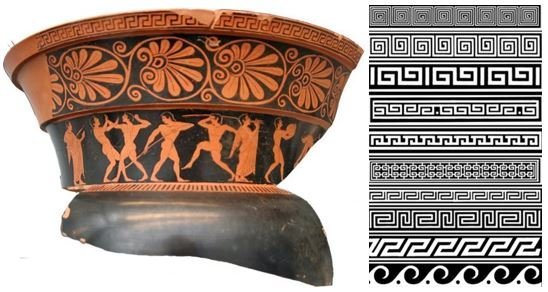What does the Greek key mean in jewellery?
The Greek key motif, image courtesy of Dallas Design
The Greek key, also known as the meander or meandros, is a classic motif often found in jewellery and decorative art. This iconic pattern consists of continuous, interlocking lines that create a labyrinth-like path, symbolising infinity and unity. Its origins date back to ancient Greece, where it was frequently seen in architecture, pottery, and textiles.
In the context of jewellery, the Greek key is more than just an attractive pattern. It symbolises the unbroken flow of life, eternity, and the everlasting bond between loved ones. This pattern was initially used by ancient Greek artisans as a representation of their philosophy and culture, embodying concepts like unity, loyalty, and the eternal cycle of life.
Gianni Versace La Medusa and Greek key motif clip-on hoop earring, image courtesy of Mozeris Fine Antiques
The popularity of the Greek key in jewellery lies in its clean lines and sophisticated design. Whether crafted in gold, silver, or adorned with gemstones, it is a versatile element that appeals to modern tastes while evoking a connection to ancient civilisation. Many jewellers incorporate the Greek key into rings, bracelets, necklaces, and other pieces, making it a popular choice for those who want to carry a piece of history with them.
Beyond its aesthetic appeal, wearing the Greek key can also hold personal meaning. It’s often chosen by individuals looking to symbolise a commitment to family or relationships, reflecting the pattern’s theme of continuity and devotion. For many, it represents a reminder of values, strength, and resilience.

